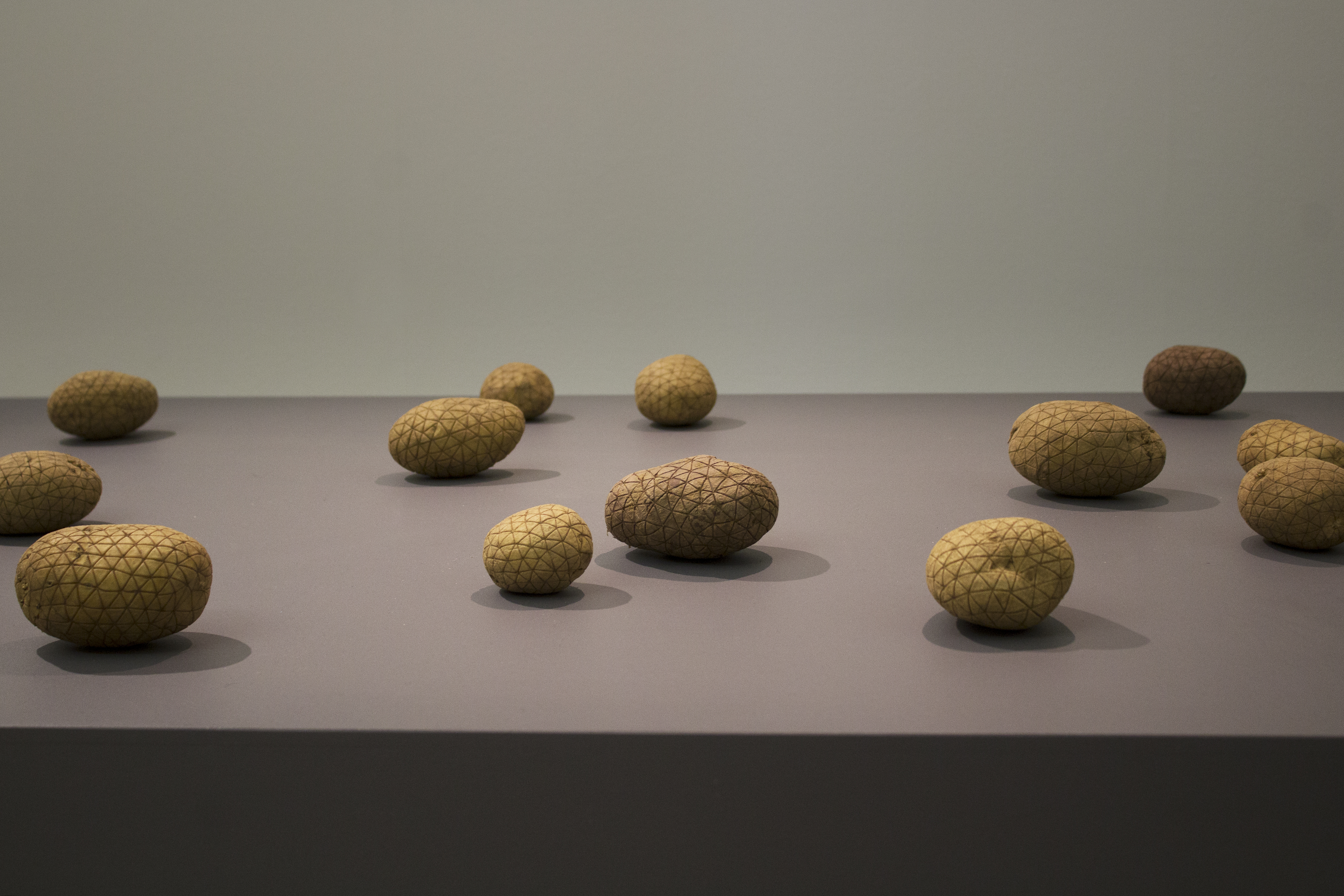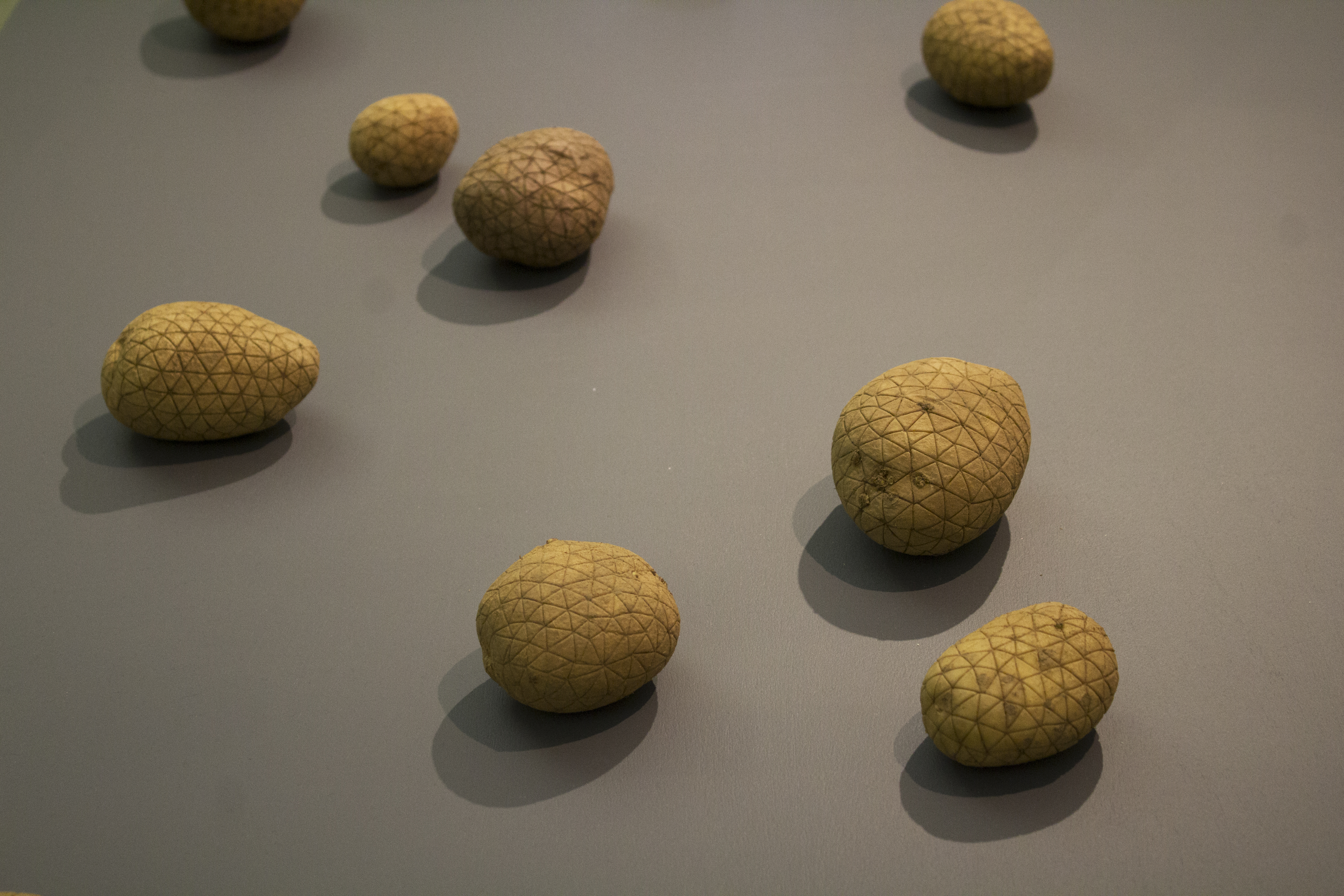The analysis of reality produces reality
Polo del ‘900
Turin, Italy
2022

The analysis of reality produces reality, 2022
Engraved potatoes
Polo del ‘900, Turin, Italy
Expo: Every food is a landscape
Curated by
Marco Trulli
A network of engraved triangles spreads across the potato’s surface, beginning from a single hexagon and expanding outward. This triangulation assigns a topological invariant to the potato: the Euler characteristic, defined by the number of formed vertices, edges, and faces.
The very act of engraving initiates the processes it seeks to trace, accelerating the potato’s decomposition and the deformation of the triangles on its surface. As time passes, the potato softens and deforms, the incisions deepen, darken, and stretch. Yet the triangulated pattern persists, as the initial triangles are remapped into newly deformed forms, preserving the number of vertices, edges, and faces, that is, embodying the invariant character of the Euler characteristic.
Here, natural decay echoes the transformations studied in topology, dissolving boundaries between matter and analysis, abstract change, and change in time. Through this interplay, the potato is never simply a vegetable nor merely a mathematical model. It is at once an organism, a record, and a transformation: a surface where abstraction, change, and decay coincide.






